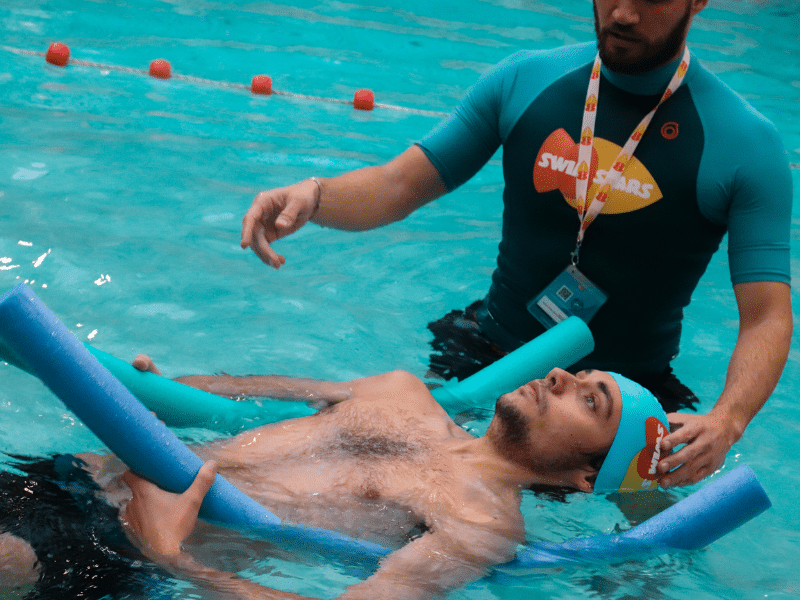Good cardiovascular and respiratory health is essential for a healthy lifestyle. With the right exercises and approaches to control your heart rate and improve your efficiency respiratoryIf you take a few minutes of exercise, you can actually improve your heart and lung strength, which in turn will help improve endurance during physical exertion.. Read on to find out what the 4 exercises and disciplines to improve cardio and breathing !
Walking improves cardio
Walking is an excellent cardio exercise that can help maintain your heart rate. Walking briskly for 30 minutes a day, at least five days a week, can improve cardiovascular fitness, both during exercise and in a prolonged resting state. Although running makes your heart work harder because it is a more intense activity, walking is still effective and can be done safely by most people. In addition, the movement of walking involves several muscle groups, which has a greater impact than an activity that primarily involves one muscle group, such as swimming. So walking is a great cardio activity that can help you keep your heart rate in a healthy range.
Diaphragmatic breathing for physiotherapists
Respiratory physiotherapy is a non-invasive therapy and a multifaceted breathing aid technique that is widely used in the treatment of diseases that affect breathing. Respiratory physiotherapy is often PRESCRIBED by health professionals and can be both educational and enjoyable for those who need it. This allows you to learn how to manage your breathing. Its effectiveness has been widely demonstrated in the medical literature ; breathing exercises, breathing control strategies and respiratory rehabilitation techniques have all been shown to significantly improve breathing-related conditions.

Diaphragmatic breathing is an exercise taught by physical therapists that helps people relax and encourages them to breathe more deeply. This breathing technique consists of breathing in and out in a fairly deep and slow manner, allowing the diaphragm to rise and fall as air enters and leaves the lungs. The purpose of this breathing exercise is to facilitate a complete exhalation, which promotes relaxation and better breathing in general. Physical therapists are experienced in teaching the diaphragmatic breathing exercise and can provide guidance on its proper execution.
The Power Breath at Pilate
One of the best Pilates exercises to do is the Power Breath. This exercise consists of breathing in deeply, then releasing and exhaling slowly. To begin, lie on your back with your legs bent and your heels close to your buttocks. Place one hand on your chest and the other on your belly, then gently inhale through your nose. Feel your chest rise quickly as the air fills, then feel your lower abdomen expand outward as you push against your hand. Hold the air for a few seconds before exhaling slowly with pursed lips. Repeat this exercise at least ten times, and you’ll feel refreshed and ready to tackle any workout!
Swimming helps to coordinate the breath and the body
The
swimming
can be an incredibly rewarding physical activity. Not only does it promote coordination between the breath and the body, but it also encourages us to
control our breathing patterns
. Swimming can help increase lung capacity and strength and maintain a healthy heart rate. Swimming allows you to develop skills that you might not otherwise have access to, helping you to improve the strength of your lungs, as well as working on proper breathing techniques.
Those looking to improve their cardio, posture and breathing. Regularly practicing simple, gentle exercises has a plethora of health benefits. Walking alone can make all the difference, as this natural physical movement increases cardio and breathing. If you prefer something more guided, yoga, pilates or diaphragmatic breathing, proposed by physical therapists, helps develop lung capacity. Finally, swimming is a great activity to get your heart rate up while coordinating breathing and movement. If you want to learn how to swim, we suggest you go to the Swim stars center which offers many swimming lessons for adults for beginners, intermediates and aquaphobes.
Recent Posts
- At what age can my child start baby swimming?
- Why it’s never too late to learn to swim
- Overcoming aquaphobia: how to effectively overcome fear of water
- The importance of taking swimming lessons from the start of the school year and throughout the year
- Common mistakes made by beginner swimmers and how to avoid them
Facebook
LinkedIn






